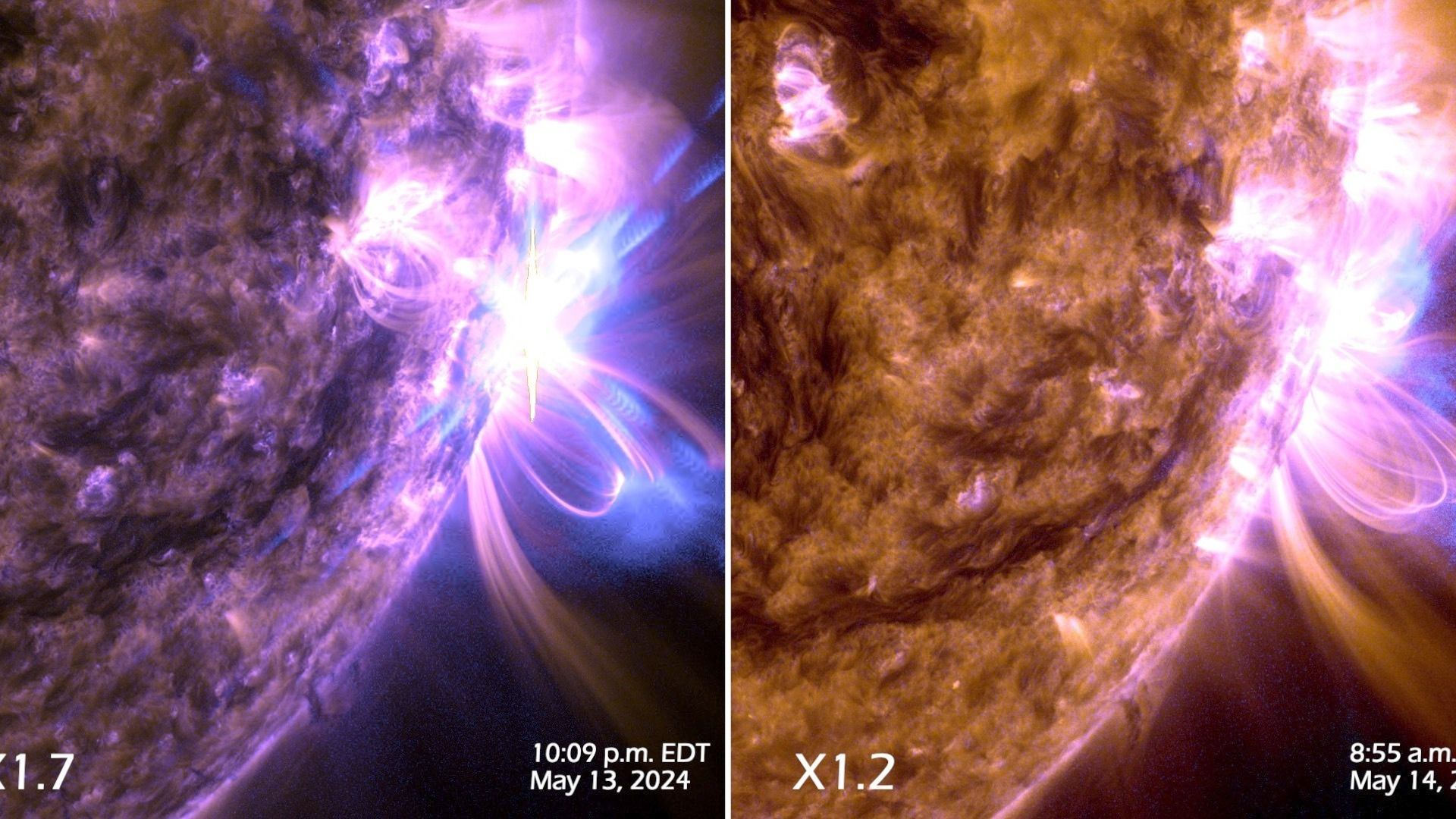Today’s Current Affairs: NASA Shares Stunning Visuals of Solar Flares
NASA has recently shared breathtaking visuals of two powerful solar flares that were unable to pass through Earth’s atmosphere. These images were captured by NASA’s Solar Dynamics Observatory and were classified as X1.7 and X1.2.
Solar flares are intense bursts of radiation, but the harmful radiation cannot reach humans on the ground due to Earth’s atmosphere. However, they can disrupt GPS and communication signals when strong enough.
The images captured by NASA highlight the extremely hot material in the flares, colored in purple, pink, and gold, showcasing the beauty and power of these natural phenomena.
## What are solar flares?
– A. Powerful bursts of radiation
– B. Harmful radiation that can physically affect humans
– C. Radiation that can pass through Earth’s atmosphere
– D. Harmful radiation that affects GPS signals
Answer: A. Powerful bursts of radiation
## How did NASA capture images of the solar flares?
– A. Hubble Space Telescope
– B. Solar Dynamics Observatory
– C. International Space Station
– D. Mars Rover
Answer: B. Solar Dynamics Observatory
## When did the first solar flare peak?
– A. 10:09pm ET on May 13, 2024
– B. 8:55am on May 14, 2024
– C. 12:00pm on May 15, 2024
– D. 6:30pm on May 13, 2024
Answer: A. 10:09pm ET on May 13, 2024
## What layer of the atmosphere can solar flares disturb?
– A. Troposphere
– B. Stratosphere
– C. Ionosphere
– D. Mesosphere
Answer: C. Ionosphere
What did NASA share visuals of?
NASA shared stunning visuals of two strong solar flares that cannot pass through earth’s atmosphere.
When did the solar flares occur?
The first solar flare peaked at 10:09pm ET on May 13, 2024, and the second peaked at 8:55am on May 14, 2024.
What are solar flares?
Solar flares are powerful bursts of radiation from the sun. They cannot physically affect humans on the ground but can disturb the atmosphere where GPS and communications signals travel.
What do the solar flare visuals show?
NASA’s Solar Dynamics Observatory captured images of the solar flares on May 13 and May 14, 2024. The images show extreme ultraviolet light highlighting the extremely hot material in the flares, colorized in purple, pink, and gold.
Today's current affairs include NASA sharing visuals of two strong solar flares that occurred recently. These solar flares are powerful bursts of radiation from the sun, but luckily they cannot pass through Earth's atmosphere to harm humans on the ground. However, they can disrupt GPS and communication signals when intense enough. NASA's Solar Dynamics Observatory captured images of these solar flares, classified as X1.7 and X1.2, on May 13 and 14, 2024. The visuals show bright flashes and extremely hot material in purple, pink, and gold colors. Science enthusiasts are encouraged to check out these stunning images shared by NASA on social media.



